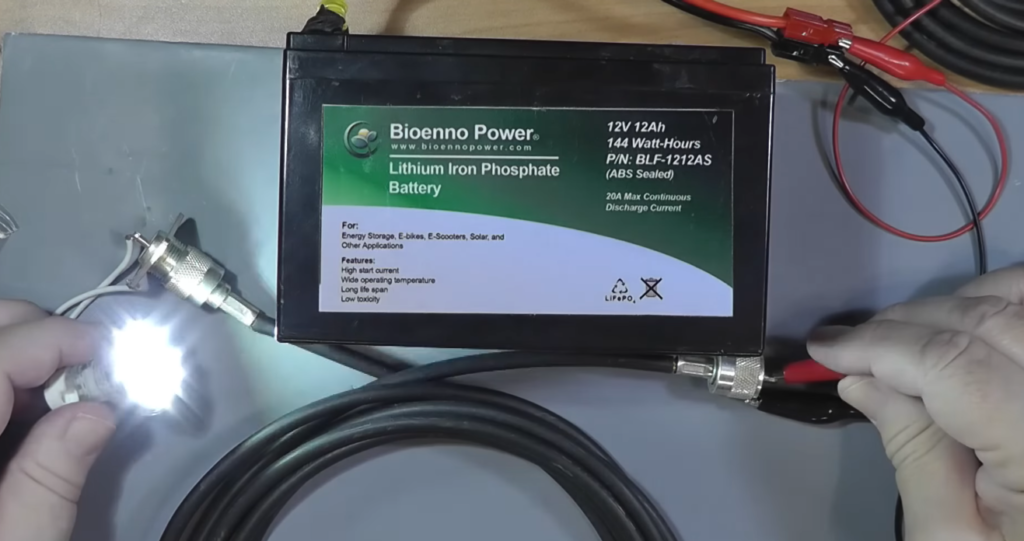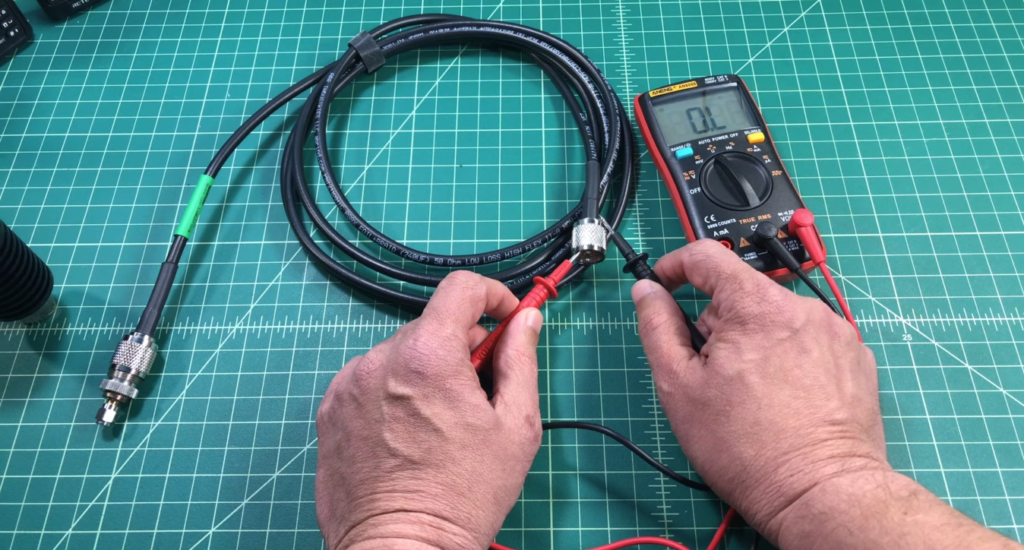In the market for a new coax cable? Before you make your purchase, it’s important to test the one you have. This may seem daunting if you don’t own a multimeter, but testing a coax cable is actually quite easy! In this guide, we will walk you through the process step-by-step. We’ll also provide some tips on how to troubleshoot problems with your coaxial connection. Let’s get started!
What is a Coax Cable?

The two main types of coaxial cables are shielded and unshielded. Shielded cables have an outer conductor that surrounds the inner dielectric material and an inner conductor. The outer conductor is usually made of braided copper wire or a metallic foil that helps protect the inner dielectric material from electromagnetic interference (EMI). Unshielded cables do not have this extra layer of protection.
While coax cables are typically designed to be low-loss at RF frequencies, over time they can develop faults that can cause signal loss. Testing a coax cable with a multimeter is one way to determine if a cable has developed a fault. [1]
Why Can Coax Cables Go Bad?
There are a few reasons why coax cables can go bad. The most common reason is that the inner dielectric material can degrade over time, which causes the cable to have increased loss.
Physical damage to the outer conductor can also cause problems. If the outer conductor is damaged, it can no longer properly shield the inner dielectric material from EMI, which can cause increased loss and interference.
Overbending the cable can also cause problems. When a coax cable is bent, the inner dielectric material can crack and break, which causes signal loss. Even if the outer coating seems fine, it doesn’t mean the internal dielectric material hasn’t been damaged.
Just like any other type of cable, coax cables are also susceptible to heat damage. This can happen if the cable is installed in an area where it is exposed to direct sunlight or other sources of high heat.
Another common cause of coax cable failure is damage to the connectors. The connectors on a coax cable can be damaged by physical stress, such as bending or twisting the cable, or by excessive heat. Damaged connectors can cause an increase in signal loss and can also create electrical shorts that can lead to interference.
Finally, water damage is another common issue that can cause problems with coax cables. Water ingress can cause corrosion of the inner conductor and/or the outer shield. Corrosion is a huge issue that can affect the performance of coax cables. Corrosion can occur at the connector interfaces or anywhere along the length of the cable. Corrosion can cause increased signal loss and can also create electrical resistance that can generate heat, which can damage the dielectric material. [2], [3]

Can You Test a Coax Cable Without a Multimeter?
Generally, multimeters are used to test for continuity, resistance, and capacitance. While you can use a multimeter to test a coax cable, it is not the only tool that you can use. There are other ways that you can test a coax cable without a multimeter.
Visual inspection
In some cases, you may be able to visually inspect the coax cable for damage. This is especially true if the cable is damaged at one of the connectors. Damaged connectors can cause an increase in signal loss and can also create electrical shorts that can lead to interference.
If you suspect that the coax cable has been damaged, it is important to inspect the entire length of the cable for any physical damage. Look for cracks in the dielectric material, breaks in the outer conductor, or any other signs of physical damage.
It is also important to check the connector interfaces for any sign of corrosion or other damage. Corroded or damaged connectors can cause a loss of signal and can also create electrical shorts.
If you find any damage to the coax cable, it is important to replace the cable as soon as possible. Damaged coax cables can cause a number of problems, including picture quality degradation, interference, and even complete signal loss.
But what if you experience problems with your cable but visually the cable looks fine? In this case, you will need to use another method to test the cable.
Use a DSS-01 tester
This type of tester is typically used by professionals in the telecommunications industry, but can also be used by consumers who want to ensure that their coaxial cables are working properly. The tester consists of two parts: a transmitter and a receiver. The transmitter sends out a signal that is received by the receiver. If the signal is strong enough, it will be heard through the speaker on the receiver. If the signal is too weak, it will not be heard. Some models use lights to represent the signal’s strength, more on that later.
Insert coax cable unto the tester
The first step is to insert the coax cable into the tester. The transmitter will be on one end of the tester and the receiver will be on the other.

Simply insert the cable the same way you insert it into a TV or other device. If the cable is not properly inserted, it will not make a good connection and the signal will be weak. Ensure the connection is firm before proceeding.
The contact between the cable and the tester should be tight in order to get an accurate reading. If the connection is not tight, the signal will be weaker and you may not get an accurate reading.
Turn on the tester
Once the cable is properly inserted, you can turn on the tester. Wait for about 10 seconds for the signal to stabilize before proceeding.
Evaluate the results
This will depend on the tester model you own but most testers will have a few different ways to evaluate the results.
Some models will simply have a light that turns on if the signal is strong enough. Others will notify you with sound.
Normally, if the signal is strong, you will see a green light on your tester. If the signal is weak, you will see a red light instead.
If you have a sound-only model, then you want to hear a loud beep. If the beep is faint or you don’t hear any beep at all, then the signal is weak.
Positive results show that there is a continuity within the cable which means that the conductor is not interrupted and the dielectric is also intact.
Once you have evaluated the results, you can proceed accordingly. If the signal is strong, then your cable is working properly. However, if the signal is weak, then you may need to replace your cable. [1]
Test Coax Cable With Modem
Even simpler than the DSS-01 tester is to use your modem to test the coax cable. Keep in mind that this option is only available if you have a coax cable that supplies internet connection.
To test the coax cable with your modem, simply connect it to your modem and turn on the device. If the coax cable is working properly, you should be able to connect to the internet and browse normally.
If you’re having trouble connecting to the internet or your connection is slow, there may be an issue with your coax cable. Try testing the cable with a multimeter to see if there’s any damage.
You can also try connecting coax cables to a TV decoder or any other device that uses a coaxial input. If the device can’t receive a signal, then there may be an issue with the cable. [1]

FAQ
How do you test a coax outlet without a multimeter?
You can manually test your coax outlet for connectivity by taking it out of your modem, and plugging the modem back in each coax outlet one-by-one, until you find the dead one. If you’re having trouble connecting to the internet, then you know something is wrong with your coaxial cable.
How do you tell if a coax cable is live without a tester?
Unfortunately, there’s no safe way to test a live coax cable without using a multimeter. Both multimeter and DSS-01 tester are required to properly and safely test a coax cable.
The only other way to test if a coaxial cable is live is by using a process of elimination. If you have multiple coax cables running into your house and one of them is not working, you can assume that the cable is not live. To be sure, use a multimeter to check for continuity on the suspected dead coaxial cable. If there’s no continuity, then the cable is most likely not live.
If you’re testing a brand new install and don’t have any other cables to reference, then you’ll need to use a multimeter or DSS-01 tester.
How do I know if my coax cable is good?
If you have a coax cable and are not sure if it is any good, visual and performance testing is the best way to determine if the cable needs to be replaced. To test a coax cable, first check for any visible damage such as cracks, fraying, or kinks. Once you have determined that the cable is not physically damaged, connect one end of the cable to your TV or other device and the other end to your antenna or cable outlet. If you are using an antenna, make sure it is properly connected and positioned. Turn on your TV and scan for channels. If you are able to receive a clear picture with no interference, then your coax cable is most likely in good working condition. However, if you experience poor picture quality or a lot of interference, this could be an indication that your coax cable needs to be replaced.
How can I test my cable without a multimeter?
If you don’t have a multimeter, there are a few other ways that you can test your coax cable. One way is to use a modem to test it. Another way is to use a DSS-01 tester.
If you’re using a modem to test your coax cable, the first thing you’ll need to do is connect one end of the cable to the modem. Once you’ve done that, you’ll need to turn on the modem and test the internet connection. If the connection is working, then the cable is most likely working as well.
If you’re using a DSS-01 tester, the first thing you’ll need to do is connect one end of the cable to the tester. Once you’ve done that, you’ll need to turn on the tester and wait for it to finish testing the cable. If the test is successful, then the cable is most likely working.
Useful Video: How To Test Coaxial Cable With a Multimeter – TheSmokinApe
Conclusion
Coax cables are essential for many types of electronic equipment, and it is important to know how to test them properly. And this can be done even if you don’t have a multimeter. With the right tools and a little bit of knowledge, you can easily test your coax cables and make sure they are in good working order. One such option is a DSS-01 tester.
DSS-01 testers are available for purchase online, and at most electronics stores. They are a small, hand-held device that is easy to use. Simply connect the tester to the coax cable you wish to test, and follow the instructions in our article. The DSS-01 will let you know if there is any signal loss or degradation in the cable.
You can also test coax cables for internet connectivity simply by plugging them into modem and connecting to the internet. If you can connect, then the coax cable is good.
Thanks for reading! We hope this article has been helpful. If you have any further questions, feel free to leave a comment below or contact us directly. And be sure to check out our other articles for more great tips and information. Have a great day!
References
- https://electrouniversity.com/how-to-test-coax-cable-without-multimeter/
- http://www.avantetechnologies.com/blog/2019/3/22/do-coaxial-cables-deteriorate
- https://us.hitrontech.com/learn/how-do-i-know-if-my-coaxial-cable-is-bad/














Leave a Reply